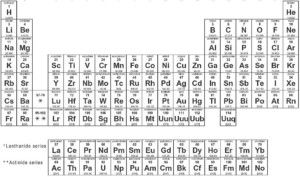The Importance of Documentation in Precision Maintenance
Why Proper Documentation Will Lead to Sustainable Improvements
 Imagine being able to look back and see what settings the equipment was last ran at for a particular SKU. Or being able to look back at the last three alignment inspections and see that slowly the alignment is drifting. What could you do with this type of information? You could perform Root Cause Analysis to see why the alignment is drifting, or trend the drifting to know when it will be out of acceptable tolerances.
Imagine being able to look back and see what settings the equipment was last ran at for a particular SKU. Or being able to look back at the last three alignment inspections and see that slowly the alignment is drifting. What could you do with this type of information? You could perform Root Cause Analysis to see why the alignment is drifting, or trend the drifting to know when it will be out of acceptable tolerances.
Having the right information is critical to making informed decisions […]
Collecting Failure Data: A Practical Approach
How to collect the failure data needed to drive improved plant performance.
 The first step to any reliability improvement program is to define what data or information will be required to drive defect elimination. In the previous posts, the following topics were discussed;
The first step to any reliability improvement program is to define what data or information will be required to drive defect elimination. In the previous posts, the following topics were discussed;
All of the topics discussed what data is required and how to structure the data to implement a reliability engineering program or defect elimination process. Understanding the what, when and why set up and is required to setup a reliability engineering […]
Understanding ISO 14224: You Guide to Sustainable Defect Elimination
Capture The Right Failure Data to Power Your Defect Elimination Activities
 In the petroleum, natural gas and petrochemical industries, great attention is being paid to safety, reliability, and maintainability of equipment. This is true in any industry and as such the learnings and information found within ISO 14224 can be applied to any industry.
In the petroleum, natural gas and petrochemical industries, great attention is being paid to safety, reliability, and maintainability of equipment. This is true in any industry and as such the learnings and information found within ISO 14224 can be applied to any industry.
While ISO 14224 was developed for the Petroleum, Natural Gas and Petrochemical industries, the same process can and should be applied in any organization. When implemented, the right data can be gathered to not only eliminate defects from […]
Failure Reporting And Corrective Action System (FRACAS)
Using a System to Record, Report And Eliminate Defects
 Why is that some organization seem to break the reactive cycle and others don’t? After all most organizations have a PM program and some form of a planning and scheduling program right? The key difference between those that do is their ability to use their failure data and systematically eliminate defects and issues from the processes and equipment. This doesn’t mean adding a new PM everytime some fails, which just won’t work.
Why is that some organization seem to break the reactive cycle and others don’t? After all most organizations have a PM program and some form of a planning and scheduling program right? The key difference between those that do is their ability to use their failure data and systematically eliminate defects and issues from the processes and equipment. This doesn’t mean adding a new PM everytime some fails, which just won’t work.
To eliminate the defects and issues, the organization needs to collect meaningful data to […]

